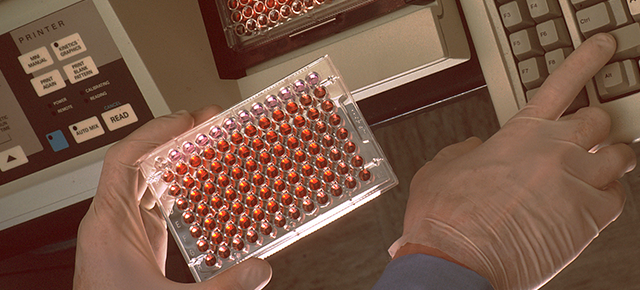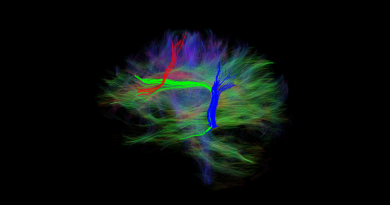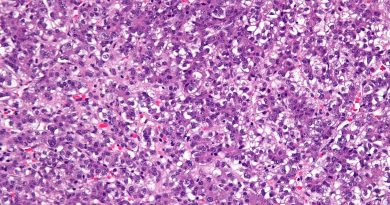From my perspective: Amanda Brown shares her experiences as a graduate student at Baylor
From the Labs interviewed Amanda Brown to learn about what drives her fascination with science, her interest in science communication and her future plans in academia.
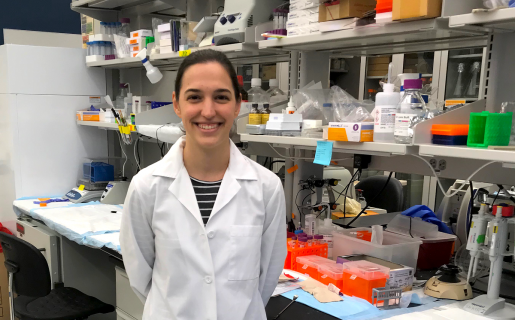
- What led you to choose this area of research for your doctoral work and specifically the lab you are in at Baylor?
I came to Baylor knowing that I wanted to study the underlying brain circuit function that leads to animal behavior, both in health and disease. I found the perfect fit for me with my mentor, Dr. Roy Sillitoe, associate professor of pathology and neuroscience. Dr. Sillitoe’s research is particularly exciting because it is multifaceted, touching on development, neurodegeneration, anatomy and electrophysiology with a basic science approach that is also highly disease oriented. Our work centers on an area of the brain called the cerebellum, which is thought to be important for both motor and non-motor functions, spanning from processes like balance and coordination to emotion and language. I was particularly drawn to research on the underlying electrical activity of this area of the brain in the context of motor disorders.
- When you are talking with people outside research, how do you explain your work and its importance?
Being able to move properly is so essential to everything we do; it’s not hard to imagine how detrimental it would be if our bodies moved in ways we could not control. Most of my Ph.D. work has focused on tremor disorders, which are defined by or include involuntary rhythmic shaking of parts of the body and comprise some of the most common acquired movement disorders in the world.
These disorders can be so severe that they strip individuals of their ability to perform tasks we often take for granted, like writing legibly or feeding oneself with a spoon.”
What’s interesting is that everyone has a small amount of tremor that is normally so slight that we don’t notice it except for in specific situations like performing fine motor tasks. The main focuses of my work have been to understand which cells in the brain are involved in creating these tremors and how communication between these cells changes between normal levels of tremor and pathological tremor. Understanding where in the brain tremors come from and how the activity of the involved cells changes between health and disease could hopefully lead us to more effective treatments and a better understanding of the motor system in general.
- Were there specific techniques you had to master for this work? If so, what resources at Baylor did you draw on to learn these?
My work has required a wide range of techniques including histology, electrophysiology, genetics, optogenetics, as well as experimental and therapeutic neurostimulation. Dr. Sillitoe and the team he has assembled, the neuroscience and pathology departments at Baylor and Texas Children’s Hospital, and the scientists and core facilities at Baylor and the Jan and Dan Duncan Neurological Research Institute, have been crucial to the inclusion of these techniques in my work.
- Are there any moments from your work on this project that particularly stand out either as an exciting discovery or a specific challenge you had to overcome?
The most impactful moment was when I successfully used deep brain stimulation directed to the cerebellum to reduce a severe tremor. I could see the tremor fade away as soon as the stimulation turned on. As a scientist, this is everything I hope for. We study the basic mechanisms of how the brain works with the hope that one day that knowledge will help someone.”
To see an instantaneous improvement to a severe motor abnormality, even if only in a mouse, encapsulated what I do this for. Deep brain stimulation is still a bit of a mystery in terms of the mechanisms behind its efficacy. I think that mystery added to the moment: knowing that one question had been answered, but so many more were left to be asked. It was a very profound moment for me.
- How has being at Baylor helped you overcome obstacles during your time in the PhD program?
Baylor is a highly collaborative environment full of amazing scientists and support staff. This community is a part of the work that I do and is a constant source of advice, inspiration, and motivation. Additionally, the community that we are within the greater Houston area is incredibly enriching and supportive.
- Has being at Baylor opened unexpected possibilities for your professional development?
I have a passion for teaching and communicating science in addition to what I do in the lab. Being at Baylor has provided me with multiple teaching and mentorship opportunities within our neuroscience department as well as through the BCM Postbaccalaureate Research Education Program (PREP). I also have been able to participate in an immersive undergraduate classroom observation program organized by our career development center which exposed me to various teaching styles and techniques used in science classes at the undergraduate level. The range of opportunities is really impressive here.
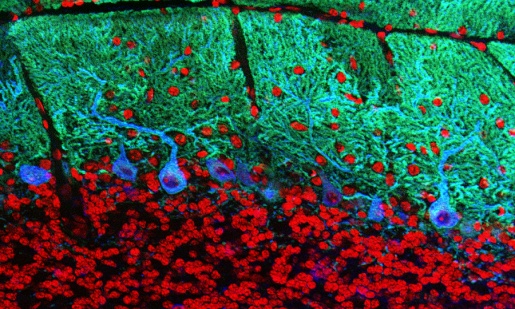
- What are your future career plans and how did working on this project contribute to your goals?
I hope to continue to contribute to science within academia – I would love to run my own research laboratory at an institute with the focus and mission equivalent to what Baylor College of Medicine has. Working on this project has allowed me to meet and collaborate with some of the leading scientists in my field. Training under Dr. Sillitoe has been an incredible experience that has allowed me to learn many experimental techniques as well as leadership, management, and teaching skills that will be invaluable in my career. This project and the environment that I’ve been a part of has allowed me to be creative and productive in my science and showed me the happiness that is possible in this career path.
- What are your favorite things to do outside the lab? Has living in the Houston area helped you enjoy those activities?
I love being out in nature. When I’m not in lab I’m frequently at the Houston Arboretum or on the trails at Memorial Park. I also love going for a walk or bike ride along the bayou trails, which are a great feature of the city.
- Would you like to add anything else?
I would like to thank the scientists and staff at Baylor for the time I have spent here. We all contribute in our own ways to make Baylor what it is, and this community has made Baylor a very special place. I would also like to thank the donors who support our research. Without them, the most creative and daring aspects of our work would not be possible.
Amanda Brown’s work linking cerebellar Purkinje cells and tremor, and the value of deep brain stimulation to control the condition, appeared in the journal eLife. You can also read about it in From the Labs.

